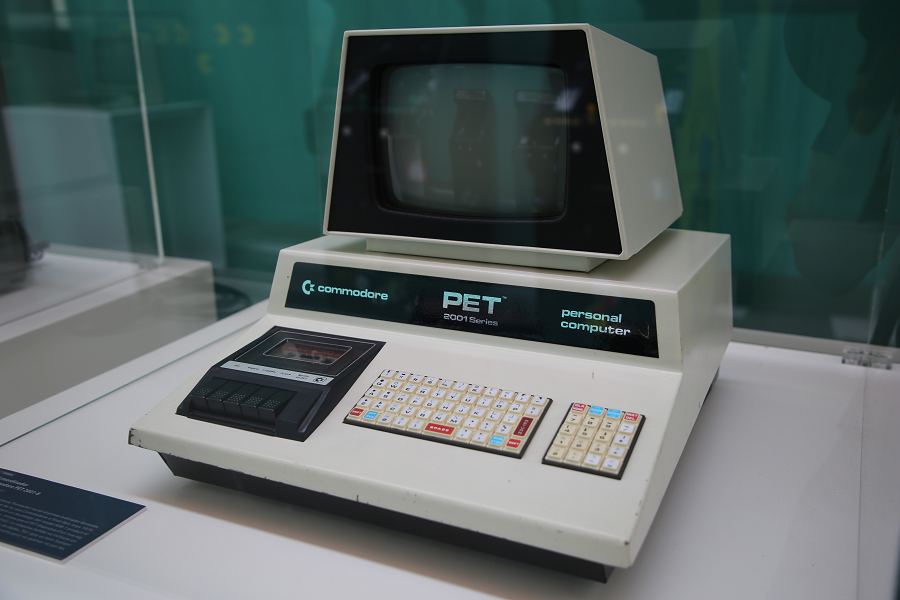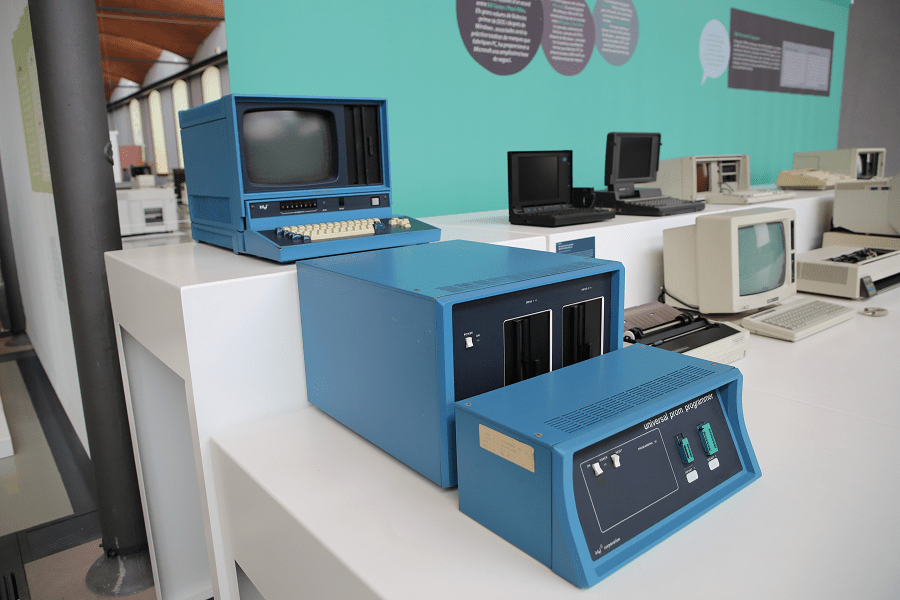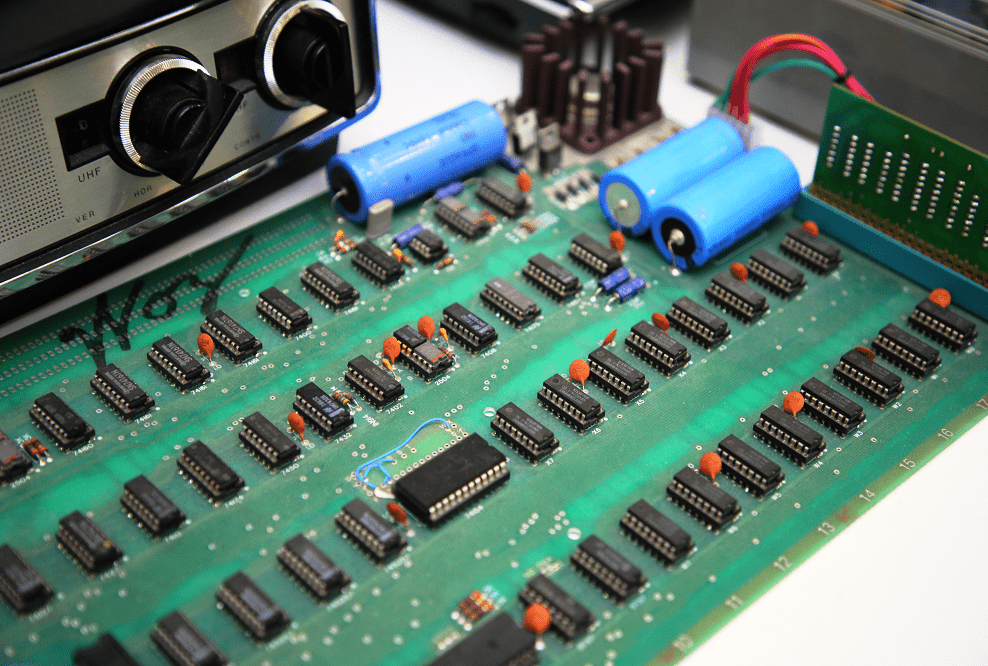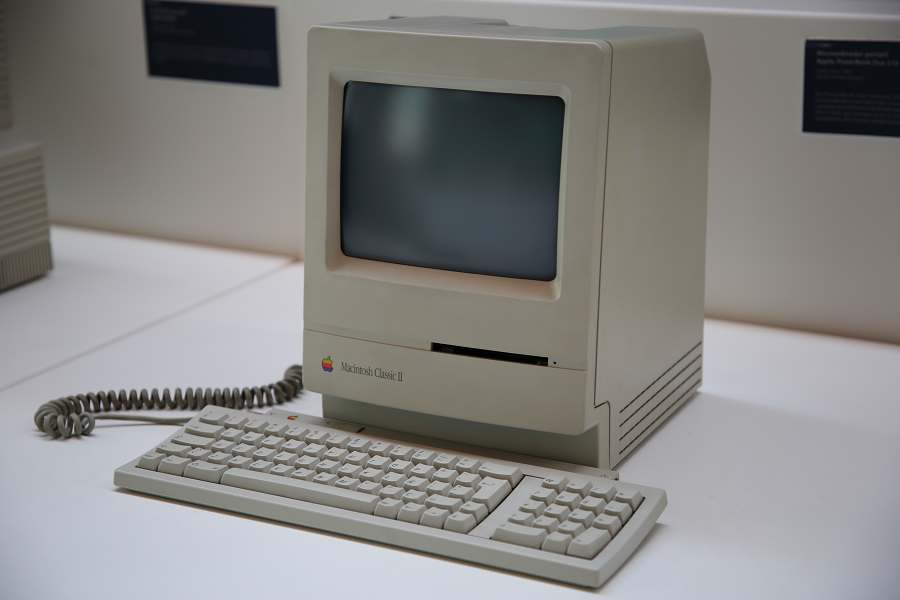The Commodore PET is a line of home/personal computers produced starting in 1977 by Commodore International. The system combined a MOS 6502 microprocessor, Commodore BASIC in read only memory (ROM), a keyboard, a computer monitor and (in early models) a cassette deck for data and program storage in a single all-in-one case.
PET 2001 series / 2001-N & -B series, CBM 3000 series
CPU: 6502, 1 MHz
RAM: 4 or 8 KB / 8, 16, or 32 KB
ROM: 18 KB, including BASIC 1.0 / 20 KB, including BASIC 2.0 (disk drives not supported on the original 2001)
Video: discrete TTL video circuit, 9″ monochrome monitor (white phosphor on the original 2001, green on 2001-N PETs), 40×25 character display
Sound: none / single piezo “beeper” (optional external speaker driven by MOS 6522 CB2 pin)
Ports: 2 MOS 6520 PIA, MOS 6522 VIA, 2x Datassette (1 used / 1 on the back), 1x IEEE-488
Notes: 69 key chiclet keyboard and built-in Datassette / full-sized, full-travel keyboard, no built-in Datassette.
The Commodore International (CI), along with its subsidiary Commodore Business Machines (CBM), was a significant participant in the development of the home-computer industry in the 1970s, 1980s and early 1990s. The company developed and marketed the world’s best-selling computer, the Commodore 64 (1982), and released its Amiga computer line in July 1985. With quarterly sales ending 1983 of $49 million (equivalent to $114 million in 2021), Commodore was one of the world’s largest personal computer manufacturers.
Founded: 1958 in Toronto, Ontario, Canada
Founders: Jack Tramiel and Manfred Kapp
Defunct: May 6, 1994
Fate: Bankruptcy liquidation; inventory and intellectual property acquired by Escom AG on April 22, 1995












